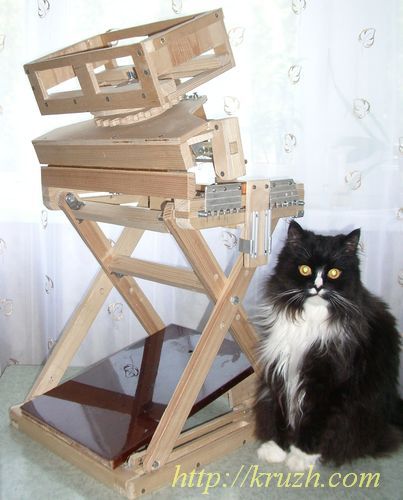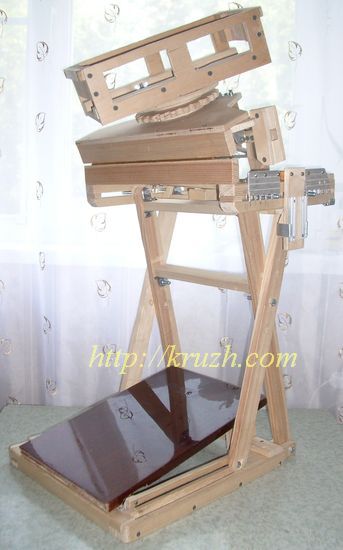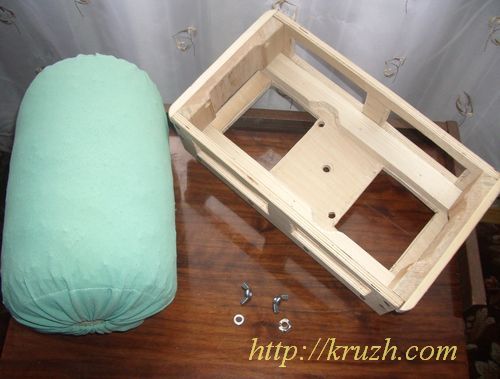The bolster can get fixed slope in the ring holder. However it would be better to slope the bolster turning it together with the inclined platform. The rest-“whatnot” was invented for lace makers in Germany. The upper floor is an inclined disk containing four pivots. The bolster is nested between pivots. This idea was developed in the Italian table rest. An Italian designer moved further – he surmised to regulate the platform slope and to set discrete meanings of the bolster rotation angle on the platform.
[wp_ad_camp_1]
The principal feature of any rest on an unclined platform is mutual dependence of angle coordinates. Really, rotating a bolster at azimuth makes inevitable elevation changes. Justice demands to notice that mentioned dependence does not mean for a lace maker. It is more important thing for her that the rest takes total bolster weight and she gets ability to rotate the bolster with small efforts.
Authors of the book suggested another design of the rest on inclined platform (Fig.2.15).

Our rest contains the next function units:
- – an upper frame;
- – an inclined platform that is set on the upper frame;
- – three mechanisms of control set on the upper frame; the first one regulates bolster revolving on the platform, the second ones controls the platform inclination and the third mechanism variates the bolster height;
- – a rack supporting the upper frame;
- – a lower frame with two guiding slots for the rack frames;
- – a bearing slab for the foots of lace maker.
The bolster has the minimum height when the angle between rack frames is maximum. When the frames are squeezed, the bolster lifted maximally (Fig.2.16). All angle adjustments are discrete:
- – a bolster rotates through 360 grades in step 18 grades; bolster position is fixed with the ratchet;
- – the platform is inclined 6 to 30 grades in step 3 grades;
- – the bolster center of gravity can be set at height 70 to 80 cm in step 2 cm.
The rest keeps steadiness at any position of the rack frames due to big square of the lower frame (rectangular 46 x 36 cm).

Fig.2.16. The maximum height of the bolster
The rest weight is 4.7 kg (without the bolster and the bearing slab).
The rest is to carry the bolster with parameters: 30-40 cm in length, 20-25 cm in diameter. Any bolster is nested into an according tray (Fig.2.17) that is placed on the inclined platform. Changing of the tray takes 20-30 seconds.
